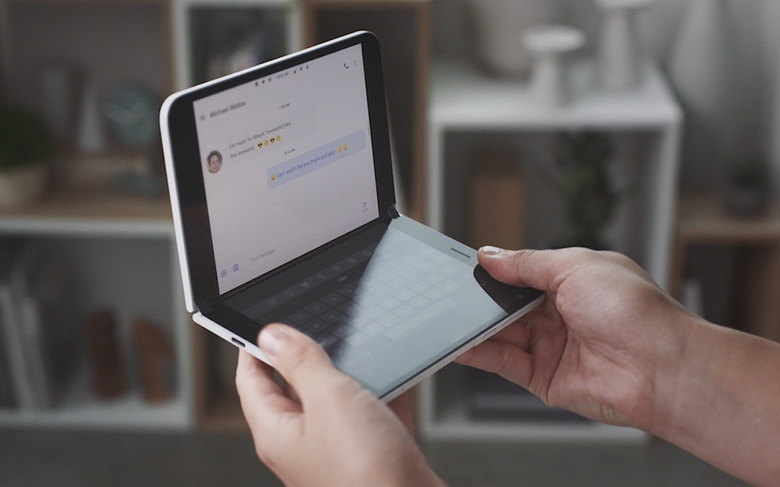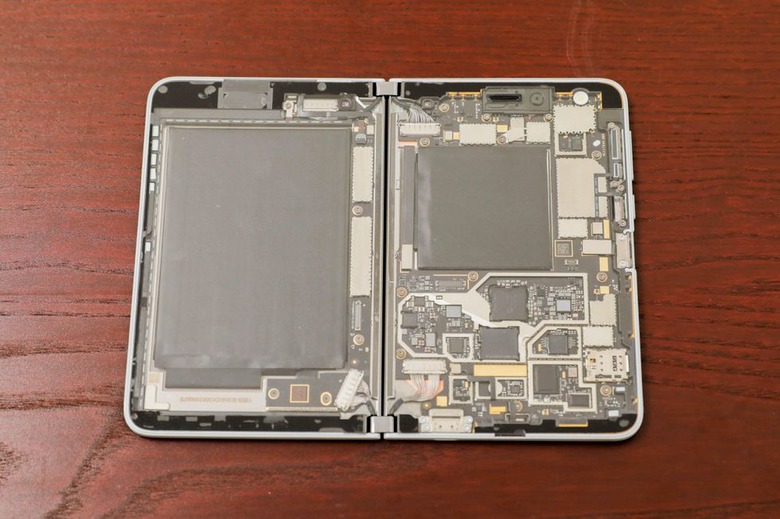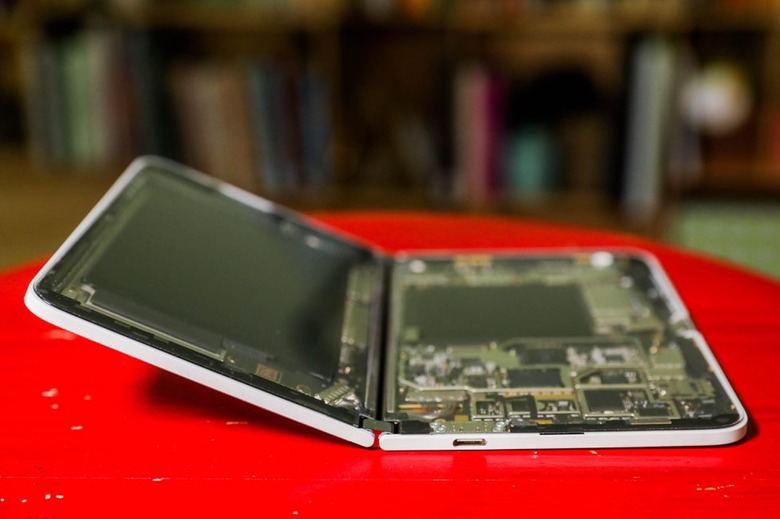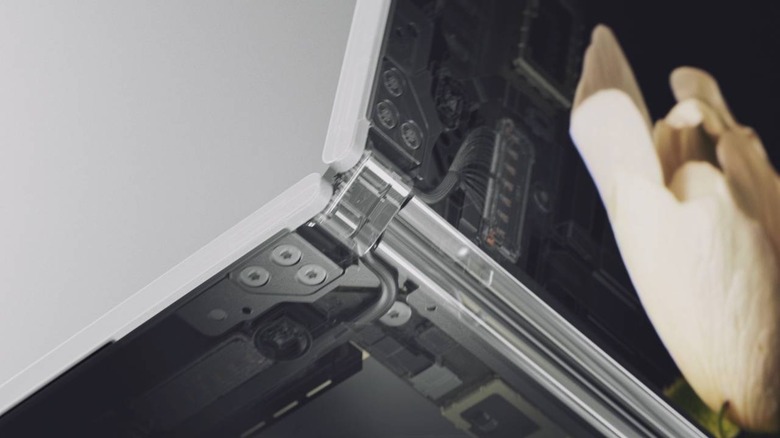These Surface Duo Photos Explain A Lot
It pays to be obsessed when you're designing a new device, something Microsoft clearly took to heart when it came up with the Surface Duo. The folding Android sorta-phone, sorta-tablet may not be the first modern clamshell on the market – indeed, Samsung is readying the second generation of its foldable, the Galaxy Z Fold 2 – but an early glimpse inside helps highlight why Microsoft's is special.
If you've been hiding in self-quarantine, the Surface Duo consists of two 5.6-inch screens, joined by 360-degree hinges. Together, they're the equivalent of an 8.1-inch panel, though there's still a join running down the middle.

What the description doesn't quite do justice to is simply how skinny the Surface Duo actually is. 4.8 mm thick, in fact, when opened, or 9.9 mm when closed. Samsung hasn't said exactly what the dimensions of the Galaxy Z Fold 2 are yet, but the original Galaxy Fold is 15.5 mm when closed up, or 6.9 mm when opened.
How did Microsoft get the Surface Duo so slim? That's where the obsession comes in. CNET got its hands on a screenless dummy device that exposes the internals, and while there's plenty of battery in there – split, in fact, across two packs, one in each half of the device – it's also a masterclass in shallow circuitboard packaging.

Everything is laid out flat, rather than the stacked layout that many smartphones have adopted in the name of more efficient design. There's Qualcomm's Snapdragon 855 chipset, a controversial choice given we're already seeing phones like the Galaxy Note 20 Ultra use the newer Snapdragon 865+, sharing space with a number of custom Microsoft chips. Then some nifty cable management snakes the various interlinks through the tiny hinges.

The result is a device that's definitely skinny, but also one which demanded some compromises. Microsoft's self-imposed limitations on thickness, and these internal shots, make clear that some of the hardware decisions complained about simply couldn't have been avoided. Giving the Surface Duo just one camera, for instance, was forced because there just isn't space in there for any more.

The absence of 5G, similarly, is down to room constraints. Even if the modem and antennas could be accommodated, Microsoft would probably have needed more battery than the 3,577 mAh squeezed inside to ensure workable runtimes. Again, there's just nowhere to put that.
Should Microsoft have compromised its size limitations and given itself – and Surface Duo users – more flexibility? The jury there is still out. Undoubtedly part of the device's appeal is its waif-like skinniness, and Samsung faced no small amount of criticism for how chubby the Galaxy Fold was when closed up. We'll have to wait to see whether the upsides were worth it when the Surface Duo goes on sale in September, where the heftiest thing about the Android gadget is its $1,400 price tag.
